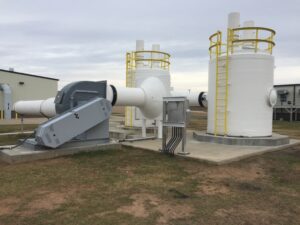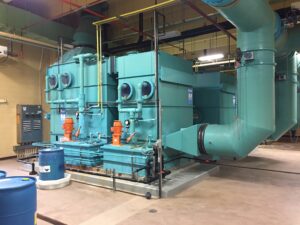Beyond the Basics: Advanced Tools to Neutralize Ammonia Smell in Complex Environments
 Many facilities try standard methods to control odors but still deal with strong ammonia smells. While simple systems may help in basic situations, they often fall short in larger or more complex environments. That’s where a more advanced approach is needed.
Many facilities try standard methods to control odors but still deal with strong ammonia smells. While simple systems may help in basic situations, they often fall short in larger or more complex environments. That’s where a more advanced approach is needed.
At Webster Environmental Associates (WEA), we work with clients facing these tougher challenges. We don’t rely on trial and error. Instead, we use proven tools and real data to design systems that actually work. If your facility has already tried to fix the problem and it hasn’t gone away, we can help.
Advanced Causes of Persistent Ammonia Odor
Ammonia smells can be difficult to eliminate for a few reasons. In many cases, the original treatment system only handles part of the problem. If the ammonia isn’t fully neutralized during the first phase of treatment, it can linger and spread.
Another issue is poor airflow. If a ventilation system doesn’t move the air correctly, the odor can build up in certain areas. This often happens when air capture systems aren’t designed to match the layout or size of the facility.
Seasonal changes or shifts in operations can also affect how much ammonia is produced. For example, warmer weather may speed up chemical reactions and release more ammonia into the air. Or, a change in raw materials or process load can raise emission levels unexpectedly.
Without a flexible and well-planned system, these variables make ammonia harder to manage. That’s why facilities dealing with changing conditions often need a more advanced odor control plan.
Techniques That Go Beyond the Basics
To neutralize ammonia smell in complex environments, we often recommend advanced treatment systems. One proven option is a multi-stage chemical scrubber. These systems include more than one treatment zone. The first stage typically uses an acid solution to remove ammonia from the air. A second stage might use an oxidizer to treat any remaining odor compounds. Multi-stage designs work well at facilities with high odor loads or where several types of emissions need to be treated at once.
In other situations, we may suggest a biotrickling scrubber or a biofilter. These biological systems use naturally occurring microorganisms to break down ammonia and other odor-causing compounds. Biotrickling scrubbers circulate a nutrient-rich solution over a media bed to support microbial activity. They are especially useful in wastewater treatment plants and other facilities where organic odors and ammonia are both present. Biofiltration systems are a good fit for steady odor loads and can be used as either a primary treatment or a polishing stage after chemical scrubbing.
We also recommend using continuous air sampling in some situations. These systems monitor odor levels throughout the day and track how they change. This is especially helpful in plants with variable loads. Real-time data helps the facility make quick adjustments and keep ammonia levels under control.
Each of these tools can be used on its own or combined with other methods. What matters most is how well the system matches the layout and needs of the site.
How WEA Builds and Tests High-Performance Systems
 We don’t guess when it comes to odor control. Before designing anything, we study how ammonia behaves at your facility. That starts with odor studies that include air and liquid sampling, odor panel testing, and lab analysis. We look at where the smell is strongest and which sources contribute the most.
We don’t guess when it comes to odor control. Before designing anything, we study how ammonia behaves at your facility. That starts with odor studies that include air and liquid sampling, odor panel testing, and lab analysis. We look at where the smell is strongest and which sources contribute the most.
Next, we use air dispersion modeling. This lets us predict how the odor spreads across your site and into nearby areas. The model also helps us test different system designs before anything is built. We can see which option provides the best control and matches your goals.
Once the system is in place, we test both treated and untreated areas. This helps confirm that the system is working and shows if any changes are needed. We also provide tools for ongoing monitoring so the facility can keep performance levels steady over time.
Our team works with you throughout the entire process. We help with system startup, staff training, and long-term planning. The goal is to give you a solution that works not just now, but for years to come.
Talk to WEA When Ammonia Control Gets Complicated
When simple fixes don’t work, ammonia odor can quickly become a bigger issue. Complaints rise, compliance risks grow, and facility operations may be affected. That’s when it’s time to look at a more advanced strategy.
WEA has helped many facilities move beyond basic odor control. Our data-driven approach and experience with complex sites allow us to design systems that deliver results. If you’re dealing with ammonia odor that won’t go away, we’re ready to help.
Reach out to Webster Environmental Associates to schedule an evaluation. Whether you’re upgrading an old system or starting from scratch, we can design a plan that fits your needs and keeps your facility on track.
